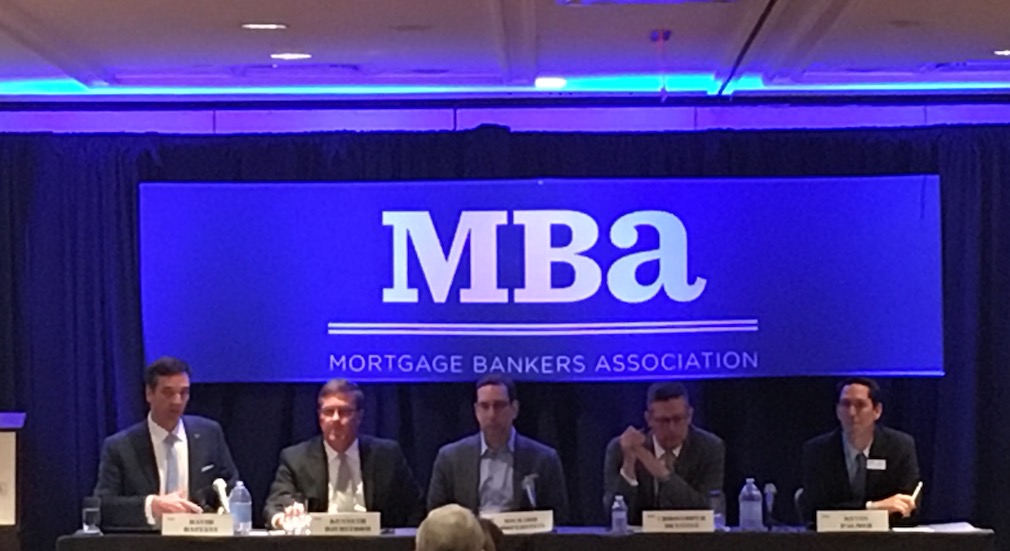At the Mortgage Bankers Association National Secondary Market Conference and Expo in New York City, panelists are abuzz with the possibility of GSE reform.
The MBA even started the conference off Sunday with a session on reform, and explained why it might actually work this time.
Last week, the MBA published its 60-page white paper on what it sees as the best approach on GSE reform.
In one of the conference’s last panels on Monday, five panelists gathered to speak on the credit risk transfer market.
Panelist moderator David Battany, Guild Mortgage executive vice president, asked the credit risk panel about their opinions on GSE reform, and what it means for the CRT market.
Kevin Palmer, Freddie Mac senior vice president of single-family portfolio management, explained Freddie Mac is currently working to ensure it has transparent databases for investors to access.
“We’ve got nine innings and maybe we’re in the fourth inning for mature development,” Palmer said. “Over the next three to five years we will continue to see more capital come into this space.”
Palmer explained that for many investors, The Big Short is their view of the housing market. As time goes on and the mortgage giant continues to become more transparent, however, that will change.
Panelist Christopher McEntee, Intercontinental Exchange senior director of corporate development, agreed capital would increase over time, saying that once the CRT market begins to see significant capital increases, increased interest from Congress and new policy making will follow.
“People see they’re building on some really good foundations,” McEntee said. “We’re working collaboratively over what we could do, and then over time we are going to see the capita come in.”
“Since the financial crisis, think of all the regulator reform that we’ve been happy with,” panelist Richard Cooperstein, Andrew Davidson & Co. director of model risk management, drawing a chuckle from the room.
Other industries struggle with regulations such as the Dodd-Frank Act, or with others passed down from the Consumer Financial Protection Bureau, however the CRT market performed well in spite of the lack of reforms since the housing crisis, Cooperstein explained to HousingWire.
But while it performed will without reforms, Cooperstein commented that there’s some work to do to refine the market.






